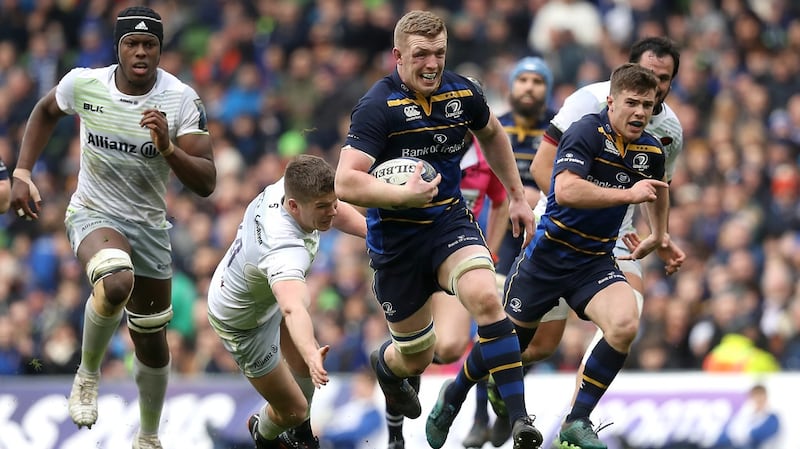Last week James Ryan, in a passing comment, spoke of Dan Leavy. "He's someone who throws his head into anything really," said the Leinster and Ireland lock. It was a compliment.
In a phrase Ryan captured something of the essence of the backrower as people see him. Bravery and willingness and a kind of blood sacrifice for the team is in every player’s locker.
But Leavy’s menace and the margins he plays appear to skirt self harm. It seems sometimes as if his belligerent eye-catching tempo moves through the game like a standing invitation for hurt.
In Leavy’s playbook there is no surrender to uncertainty or second guessing, both notions are unwanted imposters in the backrow.
“That’s just the way I’ve kind of always played,” he says. “ To some people it might look like it’s a bit dangerous. But it’s just the way I’ve always been, particularly when I go for a ball.
“I think if you are second guessing yourself in the backrow, especially as a seven going for the ball you are going to hurt yourself. So you are either all in or you are out.”
Body of work
The slashes of red around his now settled right eye have almost become a motif for style – rugby performance art. In recent months the commitment put into that body of work has elevated him from a breakout flanker into a first pick.

“I think the modelling career is not going to kick off,” he quips deflecting the narrative. “So you know I’ll take two black eyes to get through this [Scarlets] game. So yeah, if it happens it happens.”
In his current role he prefers not to look back. He is where he is and Seán O’Brien is where he is, down on pitch time with an aching shoulder.
The Tullow Tank has struggled with a hip and now the shoulder and on Monday there was no certainty from coach Stuart Lancaster that he would be ready for the European Cup semi-final.
Leavy sees himself as a seven, not a six. His strengths are involvement and contact, getting to and holding the ball. Participation.
His view is that the seven jersey is not a preference but a personal need. The constant workload of the position keeps him more consistent and less streaky in his performances. In that debate he speaks as he plays. There is no ground given, even to the iconic O’Brien.
“I find it a little bit more difficult to play at six because I am away from the ball a lot longer,” he says.
“And I think my strength is in around contact and in around the ball. I do definitely think I’m more at home playing seven, getting out and making the first tackle or hitting the first ruck, getting into the game as much as possible.
“There is always a lot of talk about backrow variations and who will move where, who will play where and whatever. I think my strength is at seven. But, I’m not the coach, so I don’t make that call.”
Heretical thoughts perhaps. But holding onto O'Brien's jersey is how Leo Cullen, Lancaster or Joe Schmidt would expect him to think.
Leavy expresses his respect for O’Brien but in Leinster culture the notion of competition is a gritty week to week docu-drama with fall out, disappointment and bruised confidences.
Confrontation
Leavy tells of how it was when he was in the academy, when careers and limited contracts were on the line and when player esteem for each other was no barrier to sessions splintering into confrontation. Nobody stepped back.
Himself and Tadhg Beirne, who was forced to leave Leinster and become a probable international player and one of the most valued Scarlets, went toe to toe.
In that melting pot Leavy thrived. He came to realise what his strengths were, what value he could add to the team.
“I’ve always held Tadhg in very high regard,” he says. “Me and Tadhg were always in the yellow bibs when we were going through the academy. I always thought he was really good.
“It used to be a straight out brawl between me and Tadhg and all the senior players. We were trying to prove ourselves and they were trying to keep us down in the academy for as long as possible.
Jack Conan may come in this week after injury. Scott Fardy can move between second and backrow. Jordi Murphy is there and Max Deegan's breakout season is belting along. Leinster have options.
But in Leavy’s world there is a simplicity about the natural order.
“Ultimately the cream rises to the top,” he says referring to Scarlets’ Beirne.
He could be talking about himself.














